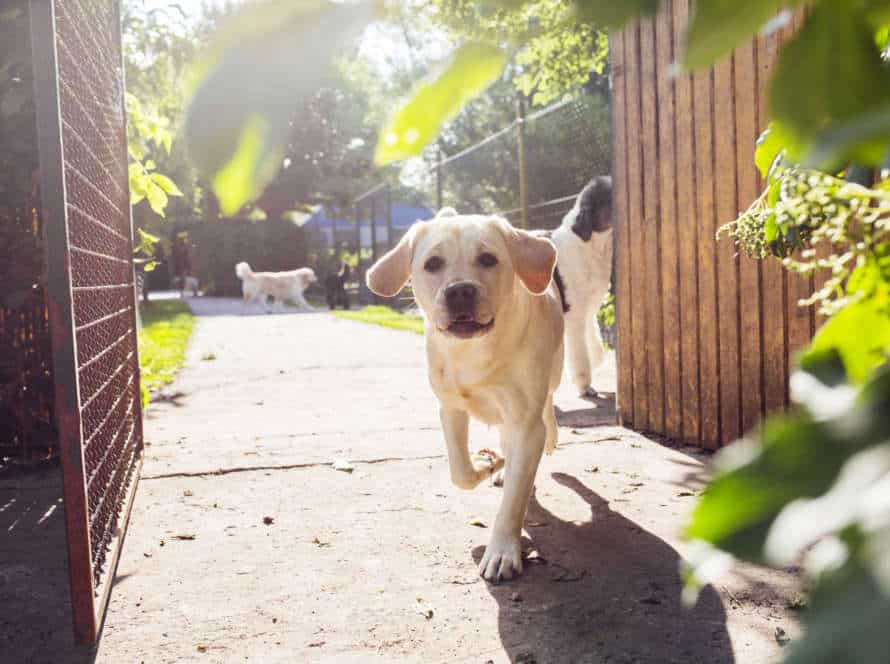Understanding Attention-Seeking Behavior in Dogs
Dogs’ attention-seeking is normal! It may be barking, jumping, or wanting pats. To manage it in multi-dog homes, owners should figure out why their dog is acting this way. This article will discuss types of attention-seeking, the causes, and steps to help manage it.
Different Types of Attention-Seeking Behaviors
Attention-seeking is normal for dogs. Different types of attention-seeking behaviours could be used to grab your attention. To manage these, it’s important to understand them.
Barking and whining? Jumping up? Pawing? Humping? All of these could be attention-seeking.
In multi-dog homes, give individual attention, exercise activities, and reward good behaviour.
Remember: Patience and consistency are key when training and managing dog behaviour. It’s important to understand their behaviour and meet their needs.
Why Dogs Develop Attention-Seeking Behaviors
Dogs need attention and love. If they don’t get it, they may act out in various ways. For instance, they may bark, jump on people, or even destroy things. Here are ways to manage attention-seeking behavior in multi-dog homes:
- Give each pup individual attention and playtime with you daily.
- Teach them basic commands such as sit and stay.
- Provide plenty of toys and games to keep them stimulated.
- Stick to a consistent routine.
- Reward good behavior with treats, praise, and cuddles.
By understanding and managing attention-seeking behaviors, you can make your home happy and harmonious for your furry pals.
How Attention-Seeking Behaviors Can Affect Multi-Dog Households
Attention-seeking behaviors in dogs can be troubling in multi-dog households. This can cause conflicts, territoriality issues and bad management of behavior. It is important to understand these behaviors to ensure a harmonious home for all your dogs.
Common attention-seeking behaviors are: pawing, whining, barking, hovering and demanding affection. If not managed properly, other dogs can become jealous, possessive and territorial. This can lead to aggression and physical altercations.
To manage attention-seeking behavior in a multi-dog household, give each dog equal attention. Establish routines and provide stimulating toys and activities. Train your dogs in obedience and behavior modification. This will help make your dogs feel secure and content. This will minimize attention-seeking behaviors and prevent conflicts between them.
Pro-tip: If you notice excessive attention-seeking behavior, consult a certified dog trainer or behaviorist. They can develop a good behavior management plan.
Tips for Managing Attention-Seeking Behavior in Multi-Dog Homes
Attention-grabbing behavior in multi-dog households can be tough to handle. If one or more of your pooches feels they’re not getting enough attention, it’s even harder. Thankfully, there are ways you can reduce the attention-seeking and keep harmony in the home. Here are some pointers for dealing with attention-seeking behavior in multi-dog homes.
Ensure Adequate Exercise and Mental Stimulation
Living in a multi-dog household means it’s essential to give your pets enough exercise and mental stimulation. This can prevent attention-seeking behaviour which leads to fighting and aggression. Here are some tips:
- Offer regular exercise that suits their energy and needs.
- Give each dog their own area and resources e.g. bowls, beds and toys.
- Train each dog alone to avoid contest and envy.
- Use positive reinforcement to reward nice behaviour and stop attention-seeking.
- Stimulate their minds with games, puzzles or training.
- Be patient and consistent with teaching them.
Pro Tip: Check their behaviour often and intervene when you spot tension or aggression.
Practice Consistent Training and Rules
Train consistently and set rules to manage attention-seeking behavior in multi-dog homes. This will give all dogs a sense of routine, predictability and clear expectations. Keep in mind:
- Feed and exercise all dogs at the same time daily.
- Use positive reinforcement to encourage good behavior, like sitting calmly or waiting patiently.
- Set boundaries, like no jumping, begging or resource guarding.
- Be fair and consistent in enforcing rules. Don’t show favoritism or give in to demands.
By practicing consistent training and rules, attention-seeking behavior will lessen and your multi-dog household will be happier!
Provide Individual Attention and Training Time
Dealing with attention-seeking behavior in pooches can be tricky, especially in multi-dog homes. Showing individual interest and offering training sessions to each canine can help reduce their attention-seeking attitude and make a more joyous and healthier home.
Here are some tips to manage attention-seeking behavior with multi-dog homes:
- Set up individual training times for each pup to focus on particular conducts and give them personal attention.
- Give each dog its own toys and playtime to avoid rivalry for attention.
- Utilize positive reinforcement to reward nice behavior and reroute attention-seeking behavior.
- Be steady with training and routines to create a sense of order and hierarchy inside the pack.
By providing individual attention and training time, you can handle attention-seeking behavior and promote a tranquil atmosphere for your beloved doggies.
Use Positive Reinforcement and Reward-Based Training Methods
Managing attention-seeking behavior in multi-dog homes? Positive reinforcement and reward-based training are essential. Here’s what to do:
- Set up a routine for your doggies.
- Figure out triggers and take them away.
- Applaud your pooches when they sit patiently or wait their turn.
- Give treats or toys as rewards for good behavior.
- Don’t punish them for attention-seeking – this just makes it worse.
Using positive reinforcement and reward-based training, you can help your dogs learn the right behaviors and reduce attention-seeking in multi-dog homes.
Consider Professional Training or Consultation
Think about getting pro help or guidance for managing attention-seeking behavior in multi-dog homes. Here are why:
- The behavior is aggressive or too much and puts the safety of dogs/humans at risk.
- It stays even after using positive reinforcement and other training methods.
- It causes stress to the dogs/humans, and lowers the quality of life in the house.
A pro dog behaviorist can give you personalized advice on how to handle this safely. It can be in-person or online. They can adjust it to your multi-dog home’s needs and issues.
Managing Specific Attention-Seeking Behaviors in Multi-Dog Homes
Managing Attention-seeking behavior in multi-dog households can be tricky. When one pup is constantly trying to get attention, it can cause disturbances and stress for the rest. Here are some tips to help:
- Teach alternative behaviors.
- Provide structure and consistency.
That’s all!
Excessive Barking
Excessive barking is a common attention-seeking behavior in multi-dog homes. It can be hard to manage unless you address the cause. Here are some tips:
- Work out what triggers it. Watch your dogs to find out why they bark. It could be boredom, lack of exercise, attention, separation anxiety or territory.
- Give them toys and chews to distract them.
- Teach them commands like “quiet” and “come” to control barking and wandering.
- Reward positive behavior with praise, treats or affection.
- If it’s not stopping, get help from a professional. Consistency and positive reinforcement are key for successful training and behavior management.
Jumping and Nudging
Jumping and nudging are common in multi-dog homes. Manage them with positive reinforcement training and boundaries! Here are some tips:
- Teach alternative behaviors – like sitting or lying down. Reward with treats and praise.
- Everyone must be consistent.
- Use physical boundaries such as baby gates or closed doors.
- Give dogs toys or puzzles to redirect attention.
With patience and consistency, attention-seeking behaviors can be managed for a calmer, happier home.
Aggression and Resource Guarding
Aggression and resource guarding are typical behaviours exhibited by dogs in multi-dog households. To manage these behaviours, pet owners can use the following techniques:
- Give each dog their own bowl and feeding area.
- Refrain from giving high-value treats, toys, or other resources when other dogs are around.
- Train the dogs with positive reinforcement techniques, such as “sit”, “stay”, and “leave it”.
- Always monitor interactions between dogs, especially during mealtimes.
- Let each dog have their safe space to retreat to when feeling threatened or overwhelmed.
By consistently applying these techniques, aggression and resource guarding in multi-dog households can be reduced and a peaceful environment for all dogs can be achieved.
Preventing Attention-Seeking Behaviors in Multi-Dog Homes
Multi-dog households can be tricky to manage with attention-seeking behavior! Dogs may try to outdo each other for their owners’ love. This can cause destructive behavior and disrupt the household. But fear not! Here are some tips to manage attention-seeking behavior in multi-dog households. Read on to discover techniques to minimize this behavior.
Proper Socialization and Introduction of New Dogs
Socializing and introducing a new pup to a multi-dog home is key to preventing attention-seeking behavior and conflicts. Here are some tips:
- Give each dog individual attention and training, so they don’t compete for it.
- Use positive reinforcement to encourage good behavior and discourage attention-seeking.
- Set clear boundaries and rules for each dog, e.g. feeding, play and sleeping areas.
- Introduce the dogs gradually and supervise interactions.
- Try pheromone diffusers or calming supplements to reduce stress and anxiety.
With the right socialization and management, multi-dog homes can be a happy and harmonious environment for everyone.
Addressing Underlying Behavioral or Health Issues Early On
To protect against attention-seeking behavior in multi-dog homes, underlying behavioral or health issues need to be addressed early. To do this, it is important to identify and take care of the problem.
Behavioral issues that can cause attention-seeking behavior in dogs are anxiety, fear and lack of socialization. Pain and digestive problems are potential health problems that can lead to attention-seeking behavior.
To manage attention-seeking behavior once the underlying issue is identified, try these tips:
- Create a daily routine – Scheduled walks, meal times and playtime for each dog.
- Provide special activities – Give each dog their own tasks such as finding treats, playing ball or using interactive games.
- Train basic obedience and etiquette – Teach the dogs “sit”, “stay”, “come” and “heel”.
By addressing the underlying problem and providing enough attention to each dog, multi-dog households can avoid attention-seeking behavior and make a harmonious living environment.
Creating a Structured and Safe Home Environment for All Dogs
Structuring and securing a safe home for all dogs is key to avoiding attention-seeking in multi-dog homes. Here’s how to manage such behaviour:
- Give each dog its own place to chill out and get away from the others.
- Set up a regular schedule for meals, play and walks to give each dog a sense of what’s coming.
- Don’t reward attention-seeking by ignoring the dog that demands it, and instead reward desired behaviour like being calm.
- Teach your dogs the basics of obedience to show them you’re the leader of the pack and avoid power struggles.
By organising a safe home environment, you can reduce stress, create a peaceful atmosphere and encourage positive social behaviour.
Encouraging Independent Play and Activities for Dogs
Encourage independent activities to stop attention-seeking in multi-dog homes. Here are some tips:
- Provide interactive toys – puzzle toys, chew toys, treat-dispensing toys.
- Set up separate play areas – give each dog their own space.
- Offer exercise and mental stimulation – daily walks or runs and play.
- Reward good behavior – treats or praise.
- Create a daily routine – meals, exercise, play, quiet time.
These tips help manage attention-seeking and make for a happy home.
Consistently Maintaining a Routine and Providing Balanced Attention to All Dogs
To avoid attention-seeking behavior with more than one dog, a consistent routine and equal attention is key. Here are tips to manage it:
- Give each pup their own bed, space, and toys so they can feel safe and secure.
- Stick to regular feeding and exercise times.
- Take note of each dog’s needs, personality and likes so you can personalize activities.
- If any tensions arise, change the activity or redirect their attention.
- Praise, treats, and playtime are great reinforcements for good behavior. Avoid reinforcing bad behavior by giving attention when they demand it.
Frequently Asked Questions
Q: What is attention-seeking behavior in dogs?
A: Attention-seeking behavior in dogs is any behavior that a dog exhibits in order to receive attention or affection from their owner or other humans present.
Q: Why do dogs exhibit attention-seeking behavior?
A: Dogs may exhibit attention-seeking behavior for a variety of reasons, including boredom, anxiety, lack of exercise, or simply as a learned behavior that has consistently rewarded them in the past.
Q: How can I manage attention-seeking behavior in multi-dog homes?
A: Some tips for managing attention-seeking behavior in multi-dog homes include providing individual attention and exercise for each dog, setting clear boundaries and rules, using positive reinforcement to reward good behavior, and seeking professional help if necessary.
Q: What are some common attention-seeking behaviors in dogs?
A: Common attention-seeking behaviors in dogs include barking, whining, jumping up, pawing, nudging, and demanding physical contact or play.
Q: Can attention-seeking behavior in dogs become a problem?
A: Yes, if not managed properly, attention-seeking behavior in dogs can escalate and become problematic, leading to destructive or aggressive behavior, and creating tension and conflict among dogs in a multi-dog household.
Q: Is it possible to train dogs to reduce attention-seeking behavior?
A: Yes, dogs can be trained to reduce attention-seeking behavior through positive reinforcement training, teaching alternative behaviors, and providing structure, routine and consistency in their daily routines.







